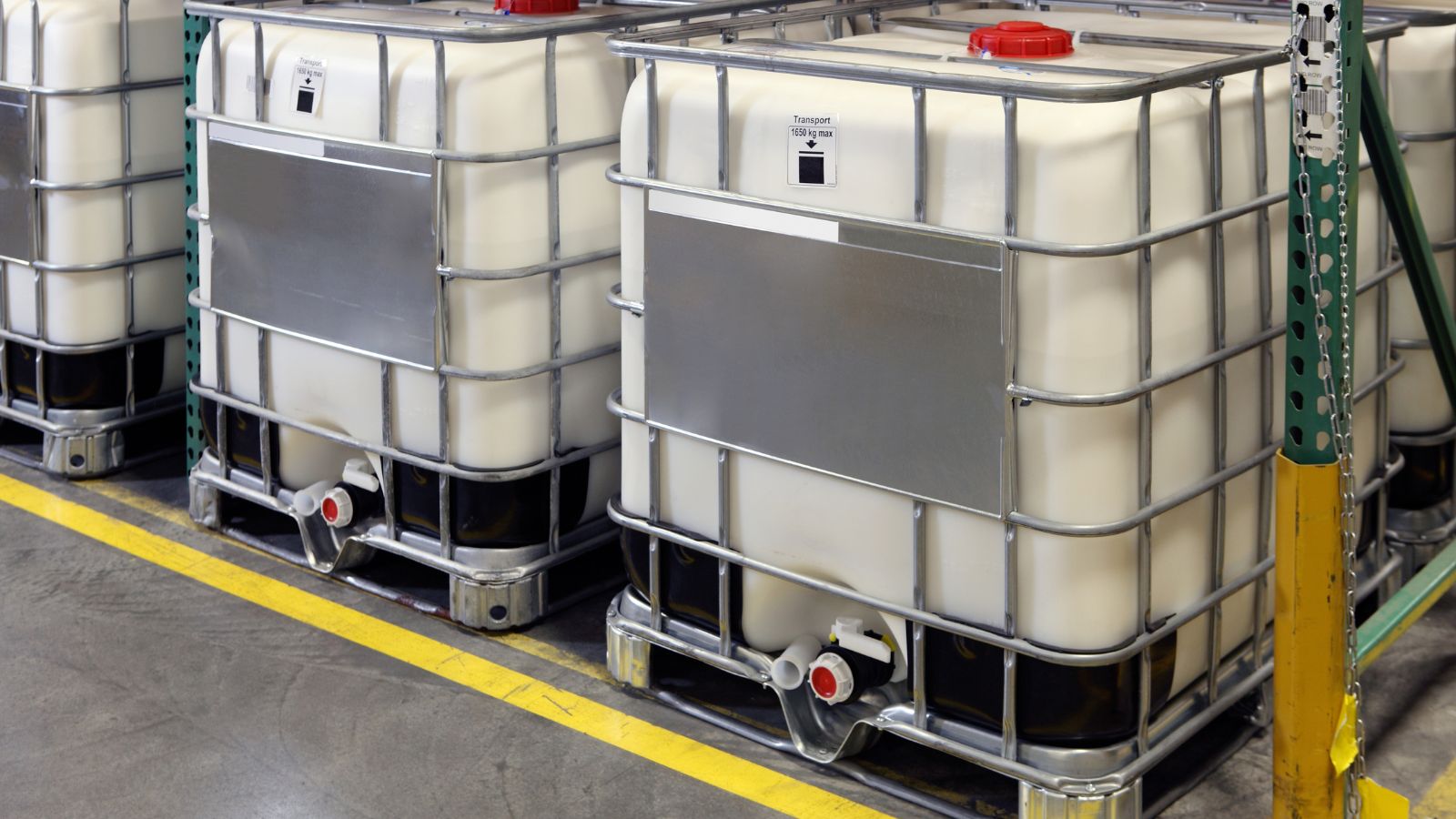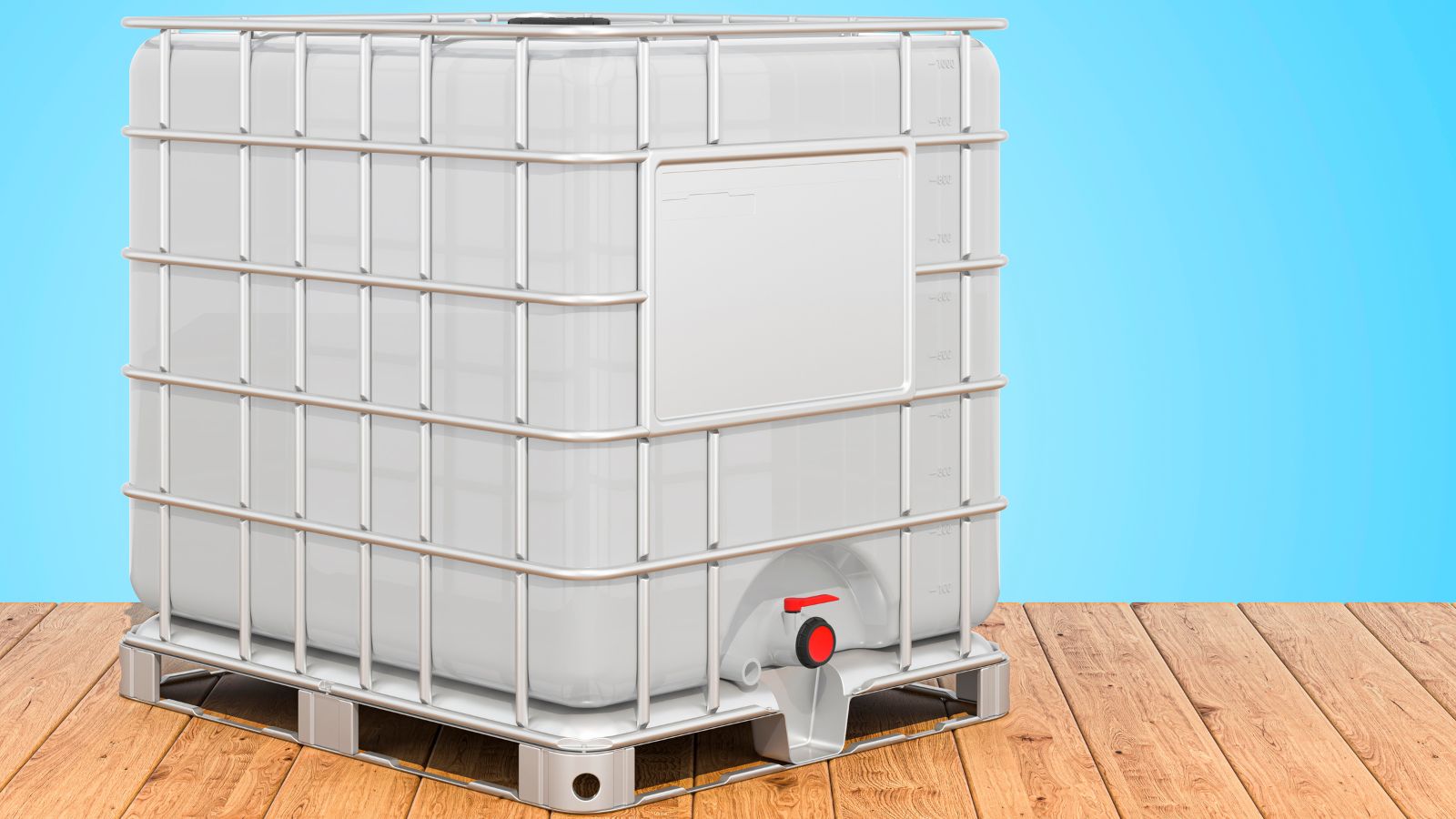
Let me tell you about Intermediate Bulk Containers (IBCs). These storage containers are popular in many industries, and there’s a good reason for it. They’re incredibly convenient for storing and moving both liquid and granular materials. The cost-effectiveness makes them attractive to many businesses.
Their cost-effectiveness makes them attractive to many businesses, hence the example of Repackify – there is a huge secondary market for IBCs.
My analysis highlights the main dangers of IBC totes. These include: Mechanical problems, Chemical hazards, Operational risks, Regulatory compliance issues. From my experience, good training and following safety rules greatly lower these risks. Companies often overlook small details that later become major problems down the line.
Mechanical and Structural Hazards
Forklift-Related Incidents
Forklift operations represent one of the most significant hazards when handling IBC totes. From 2005 to 2007, a study found that forklift truck incidents caused about 20% of all IBC failures. These incidents include:
- Forklift tines can pierce IBCs, leading to spills. There are documented cases of IBCs being punctured by forklift lifting arms.
- IBCs can fall from forklifts. This usually happens when they aren’t loaded properly onto the forks. It can also occur if the forklift driver isn’t careful.
- Forklifts can collide with stationary objects when moving IBCs. These objects may include:
- Trucks
- Other forklift trucks
- Stacks of IBCs
- Warehouse racking
- Warehouse walls
- Pallets can overturn during transit for several reasons. Unbalanced loads, operator mistakes, or forklifts hitting objects or potholes can cause this.
When checking forklifts for IBC handling, look closely at the forks and attachments. Check for cracks, bends, or other damage. This helps prevent accidents. The consequences of these incidents can vary. They may include minor spills or major loss of containment. There is also a risk of exposure to hazardous materials.
Warehouse Storage and Racking Failures
Storage failures are a key IBC hazard. They make up about 20% of all failure reports. These include:
- Poor stacking causing IBCs at the top of a stack to fall onto other IBCs or onto the ground
- IBCs sticking into work areas can get hit by equipment. This may make the IBC fall and catch on warehouse racks. It could lead to rack failure.
- Warehouse racking can collapse if it’s loaded incorrectly or hit. This is shown by reported incidents of racking failures.
- Container slippage can happen with racking systems. This is more common in tall and narrow warehouse aisles.
One key example shows this risk: a warehouse support beam collapse caused IBC failure. IBC containers that aren’t stacked properly in the warehouse can stick out.
Structural Integrity Issues
The physical integrity of IBCs themselves presents several failure points:
- Wooden pallets often fail at the base of the IBC. This leads to containers slumping.
- Loose outlet valves can cause leakage or connection failures, leading to containment loss.
- Breakage can happen during handling and transport. IBCs are sensitive to heat and impacts, making them prone to piercing or bursting.
- Age-related wear, caused by long UV light or cold exposure, makes IBCs easier to damage.
IBC structures are “fragile” and have “a number of weaknesses.” They need regular checks for damages, leaks, or signs of instability before use. IBC units that are cracked, warped, corroded, dented, or damaged must be fixed. They need repairs before they can be used again.
Chemical and Fire Hazards
Flammable and Combustible Liquid Risks
IBCs with flammable or combustible liquids pose major fire risks. Follow the safety rules:
- NFPA 30 groups flammable and combustible liquids by flash points:
- Class I: flash point below 100°F
- Class II: flash point between 100°F and 140°F
- Class III: flash point above 140°F
- Class I liquids include three categories:
- Class IA: flash point below 73°F and boiling point below 100°F.
- Class IB: flash point below 73°F and boiling point above 100°F.
- Class IC: flash point between 73°F and 100°F.
- NFPA 30 says not to store over 120 gallons of Class IB, Class IC, Class II, or Class III liquids in containers.
- The standard bans storing flammable liquids in “basements.” A basement is a part of a building. It’s a story that is mostly below ground. At least half of its height must be underground. Access for fire-fighting is limited.”
IBCs involved in fires can lead to catastrophic outcomes. A fire at a chemical packaging company in the Netherlands spread quickly. It caused storage tanks with many IBCs to explode. This incident shows how IBCs can quickly spread and worsen fires. It involved a 20,000 m² building that stored flammable, toxic, and corrosive substances.
Electrostatic Discharge Hazards
A hidden danger of IBCs is electrostatic discharge. This is especially true when dealing with flammable materials.
- Materials moving in IBCs can build up electrostatic charges. This happens if the IBC isn’t grounded correctly.
- An IBC with static charge behaves like a capacitor in a circuit. This can lead to conditions that may cause a spark discharge, which can ignite a fire.
- Industry standards say IBCs must be conductive. They need a low-resistance connection to earth. This resistance should be less than 10 ohms. This ensures effective charge dissipation.
- If the grounding connection fails, you can quickly stop static charges. Just cut off the material flow into the IBC.
Some explosions during filling or emptying FIBCs happened because of static electricity. This led to the creation of “anti-static” FIBCs. These specialized containers don’t protect against other ignition sources. For example, burning powder from upstream units can still pose a risk.
Pressure-Related Hazards
IBCs are particularly vulnerable to pressure-related failures:
- They don’t handle internal pressure well. If their contents expand, they can explode.
- Expansion can happen because of:
- the vapor pressure of a substance
- uncontrolled reactions
- exposure to heat
- Some IBCs are fitted with special caps to vent pressure and prevent the risk of explosion
- Reactive chemicals, like monomers, can start polymerization reactions in IBCs. If not properly inhibited or stored, this can lead to container swelling or failure.
A case was documented where hydrogen peroxide spilled from a half-filled 1 m³ IBC. The IBC burst at a surface treatment company. A reaction between incompatible products in the IBC caused too much pressure to build up. This pressure made the IBC burst and spill its contents.
Operational Hazards
Filling and Emptying Risks
Filling and emptying operations present several hazards. They make up about 13% of all IBC failure reports.
- Outlet valves left open in error, causing contents to leak to ground
- Overfilling of containers, resulting in spills and potential chemical releases
- Improper emptying procedures, such as “pumping out with the top cap in place, causing the IBC to be sucked in”
- Charging contents to the wrong vessel, potentially causing incompatible chemical mixtures
- Larger container volume changes dust cloud traits. This could lead to explosion risks.
The physical design of IBCs also influences operational risks. In larger IBCs, the filling stream takes up less space. This can create a cloud around it. Such clouds can raise explosion risks, especially with flammable dusts.
Improper Storage and Handling
Storage environments and handling practices worry me when it comes to IBC safety. You’d be surprised how many additional risks they introduce.
During transit, poorly stacked IBCs in trucks or unsecured loads can shift around. This movement damages containers or causes them to fall over completely.
Forklift operators sometimes drop IBCs in the wrong spots. This can put them too close to incompatible chemicals, creating a hazard. My experience shows these mistakes often lead to hazardous chemical reactions.
Mislabeled containers present another serious problem, especially those holding waste or by-products. This leads to poor storage and chemicals staying in storage much longer than needed.
Waste run-off finding its way into IBCs happens more often than you might think. This creates accidental mixing with incompatible materials and potentially unstable chemical combinations.
The safety of IBCs really depends on how people manage them. Most IBC incidents come from mishandling or mistreatment. They don’t usually arise from mechanical or structural failures. Industry risk assessments show this trend clearly. Many workers overlook the risks.
Compliance and Environmental Protection
Regulatory Requirements
Let me walk you through the regulations for IBC use that help keep things safe.
When it comes to containment systems, EPA regulations are pretty clear. You need a containment area. It must hold either 10% of the total volume of all containers or the volume of your largest container. Use the larger of the two amounts.
The containment unit must support all containers well. It should not have any cracks or gaps. It has to be strong enough to handle any leaks, spills, or rainwater that might accumulate.
The base of your containment unit must slope or be made to drain liquids. This includes leaks, spills, and rainwater. This rule doesn’t apply if your containers are raised or protected in another way.
Regular testing and inspection are mandatory for IBCs. Every 2.5 years, or 30 months, conduct internal pressure tests at 2.9 PSIG. Also, perform external visual inspections. A more thorough internal inspection is required every 5 years.
Spill Containment Measures
We need strong spill containment solutions for hazardous materials. This protects the environment and keeps us compliant with regulations. In my experience, IBC spill containment pallets serve as excellent backup protection. They prevent contamination when primary containers fail or leak.
The standard four-drum spill pallet works great for most operations. It holds four 55-gallon drums and has a 66-gallon capacity. This meets the EPA’s secondary containment requirements well.
These pallets usually have built-in pedestal systems. They can support up to 4,000 pounds. The design features low sidewalls. This makes loading and dispensing easier for everyone. The removable grates are a real time-saver when it comes to cleaning.
I need to keep up with key regulations for spill containment products.
These include:
- EPA 40 CFR 264.175
- SPCC (Spill Prevention, Control, and Countermeasure)
- NPDES (National Pollutant Discharge Elimination System)
- UFC (Unified Facilities Criteria)







